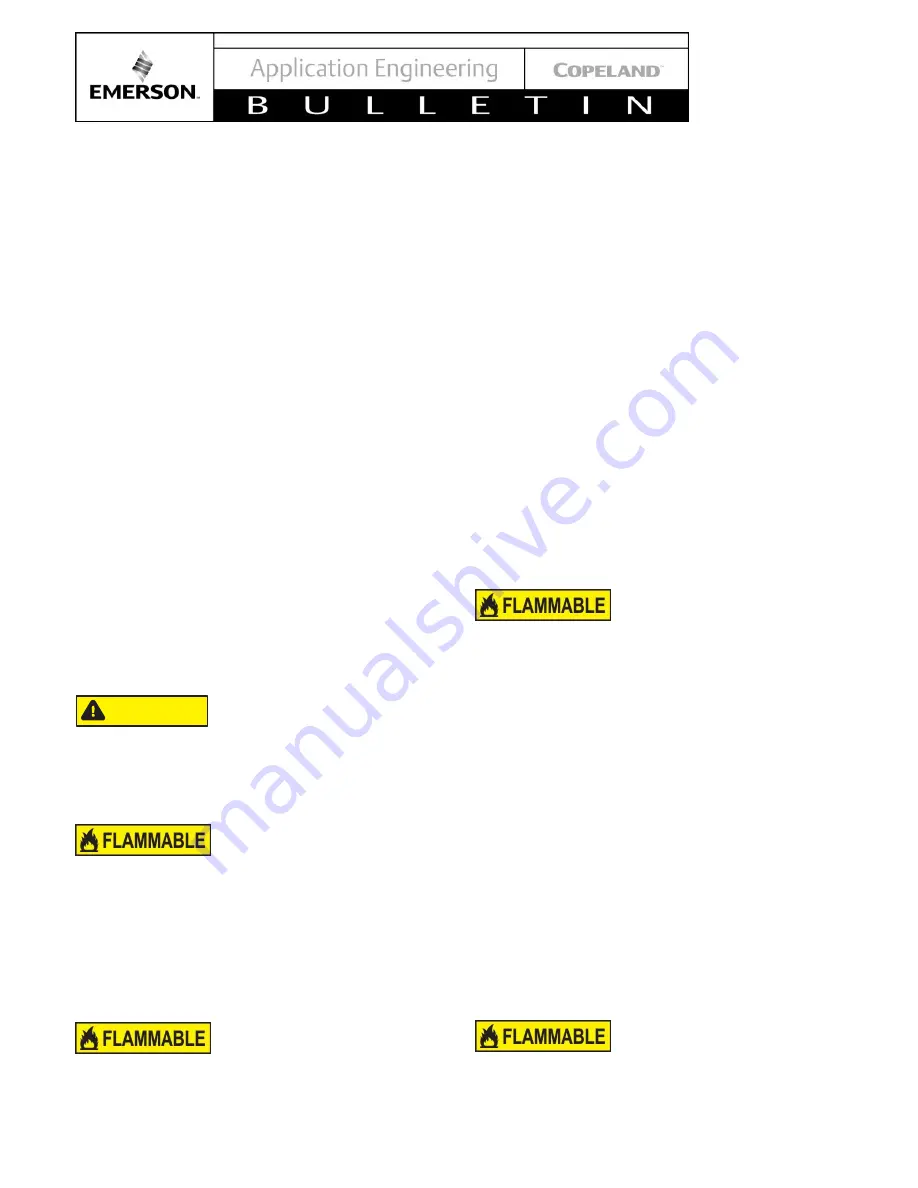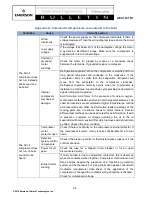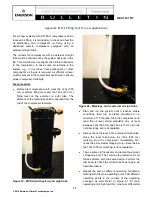
© 2018 Emerson Climate Technologies, Inc.
19
AE4-1431 R1
5.8. Shell temperature
The top shell and discharge line can briefly but
repeatedly reach temperatures above 300°F (150°C) if
the compressor cycles on its internal protection devices.
This only happens under rare circumstances and can be
caused by the failure of system components such as the
condenser or evaporator fan or loss of charge and
depends upon the type of expansion control. Care must
be taken to ensure that wiring or other materials that
could be damaged by these temperatures do not contact
the shell.
5.8.1. Minimum Run Time
Emerson recommends a maximum of 10 starts per hour.
Recommend stating minimum 2-3 minutes run time is
required for adequate oil return. There is no minimum
off time because scroll compressors start unloaded,
even if the system has unbalanced pressures.
5.8.2. Shut-off sound
Scroll compressors incorporate a device that minimizes
reverse rotation. The residual momentary reversal of the
scrolls at shut off will cause a clicking sound, but it is
entirely normal and has no effect on compressor
durability.
6. Maintenance & repair
Conductor cables! Electrical shock!
Follow the
lockout/tag out procedure and the national regulations
before carrying out any maintenance or service work on
the system.
When opening the refrigeration equipment or working on
it avoid explosive atmosphere and ignition sources in
any case.
To maximize efficiency in controlling leaks when
opening the refrigeration equipment or working on it, it
is recommended to use a leak detector designed for use
with R290 refrigerant.
Continuously check if the ambient atmosphere is non
explosive.
In case of explosive atmosphere:
•
do not energize any electrical component in the
system;
•
fire and smoking are strictly forbidden;
•
no unshielded flame is allowed;
•
power tools shall not be used.
Furthermore, before opening the refrigeration system or
working on it with an unshielded flame:
•
continuously check if the ambient atmosphere
is non- explosive and ensure proper ventilation
of the room;
•
if the atmosphere reaches a dangerous
concentration of flammable gas, avoid any
ignition source and ventilate the room further;
•
if parts of the refrigeration system are charged
with flammable refrigerant, be sure that all the
valves are tightly closed and that the open pipes
after the valves are free of refrigerant and oil.
6.1. Disassembling system components
Continuously check if the ambient atmosphere is non
explosive.
During service make sure that:
•
the area is well ventilated;
•
the materials and equipment used are suitable
for use under explosive conditions;
•
only non-sparking tools are used;
•
antistatic gloves and clothes are used;
•
build-up of electrostatic charges is avoided.
In case of explosive atmosphere:
•
do not energize any electrical component in the
system;
•
no unshielded flame is allowed.
Unshielded flame! Fire hazard!
Oil-refrigerant
mixtures are highly flammable. Remove all refrigerant
before opening the system. Avoid working with an
CAUTION











































